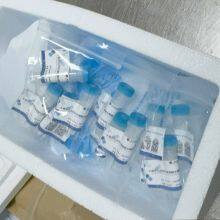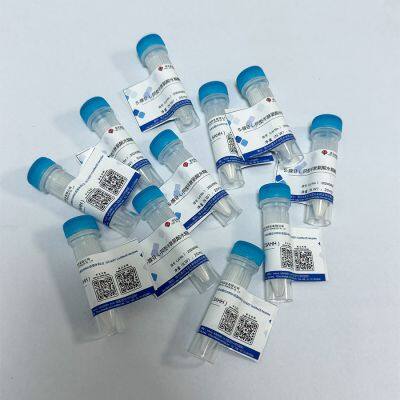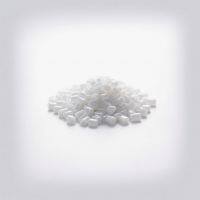The Relationship Between Purine Nucleoside Phosphorylase and Nucleic Acid Synthesis and Decomposition
Purine nucleoside phosphorylase, abbreviated as PNP or PNPase, can reversibly catalyze the degradation of purine nucleoside phosphate, breaking down the substrate purine nucleotides into corresponding purine and ribose-1-phosphate. It is an enzyme related to the synthesis and degradation of nucleic acid DNA and RNA in the body.
The monomer of DNA or RNA, namely nucleotide, is composed of one molecule of ribose or deoxyribose, one molecule of base and one molecule of phosphate. It synthesizes double stranded or undergoes transcription or reverse transcription based on the principle of base complementary pairing (A-T, G-C), and translates into amino acids to synthesize proteins according to different base sequences (codons). There are four types of bases, adenine A, guanine G, cytosine C, and thymine T (RNA corresponds to uracil U).
Purine nucleoside phosphorylase is one of the key enzymes in the purine salvage synthesis pathway, widely present in prokaryotes and all fungal, animal, and plant cells. The PNP specificity of purine nucleoside phosphorylases from different sources varies. PNP in humans and higher animals and plants belongs to the trimeric group, and the substrates that can be catalyzed include adenine nucleotides and guanine nucleotides; Most bacteria have PNP hexamers, which can catalyze substrates other than adenosine and guanosine, as well as hypoxanthine nucleotides (inosine, which can serve as precursors for adenosine and guanosine); Some microorganisms have both types of PNP oligomers present simultaneously.
Principle of purine nucleoside phosphorylase activity detection:
At pH 7.7 and temperature of 37 ℃, 1 unit can oxidize 1 μ mol of inosine phosphate per minute to produce hypoxanthine and ribose-1-phosphate. Enzyme Committee Number EC 5.4.2.2, CAS Number 9030-21-1 or 9059-37-4. The enzyme has a molecular weight of 32kDa, an isoelectric point of 6.0, a Michaelis constant of 2.2X10-4M, an optimal pH value of 7.5-8.0, an optimal temperature of 60 degrees Celsius, a stable pH range of 5-10, and an inhibitor of silver ion mercury ion.
The detection related to PNP includes: using Trinder reaction spectrophotometry to determine the activity of purine nucleoside phosphorylase (PNP) in red blood cells; PNP was coupled with xanthine oxidase uricase peroxidase, and serum 5 '- nucleotidase was determined using a dual reagent homogeneous rate method.
Purine nucleoside phosphorylase can be used for multiple detections in biological research. DeSheng's PNP is a reagent grade enzyme preparation, which is used in conjunction with the company's various Trinder's display reagents for enzymatic photometric detection in biochemical kits.

Send Inquiry to This Supplier
You May Also Like
-
Tris and Glutamate Dehydrogenase Work Together on Homocysteine Assay KitUS$ 10MOQ: 1 Milligram
-
The Price of TRIS-HCL 1185-53-1 Produced by Desheng Has Been Lowered. Please Feel Free to Consult and PurchaseUS$ 13.6 - 16.8MOQ: 100 Kilograms
-
Why Should we Pay Attention to Solubility When Purchasing Biological Buffer TRIS 77-86-1?US$ 8.6 - 13.8MOQ: 100 Kilograms
-
The Effect of Purity of BICINE Powder 150-25-4 as a Biological Buffer on the Performance of Buffer SolutionsUS$ 18.8 - 26.8MOQ: 100 Kilograms
-
Introduction to the Transportation Packaging of CAPS Powder 1135-40-6, a Biological Buffering AgentUS$ 22.8 - 26.8MOQ: 100 Kilograms
-
Compatibility of Biological Buffer MOPS 1132-61-2 With Other ReagentsUS$ 26.6 - 32.8MOQ: 500 Kilograms
-
Application of Biological Buffer TAPS 29915-38-6 in Enzyme Activity ResearchUS$ 66.8 - 76.8MOQ: 500 Kilograms
-
The Advantage of High Purity of EPPS Powder 16052-06-5 Raw Materials for Biological Buffering AgentsUS$ 56.8 - 68.8MOQ: 500 Kilograms
-
Advantages of MOPSO Buffer 68399-77-9 in Low-temperature Biochemical WorkUS$ 28.8 - 39.8MOQ: 500 Kilograms
-
What Does HEPES Buffer 7365-45-9 do for Cell CultureUS$ 26.6 - 32.8MOQ: 500 Kilograms





































